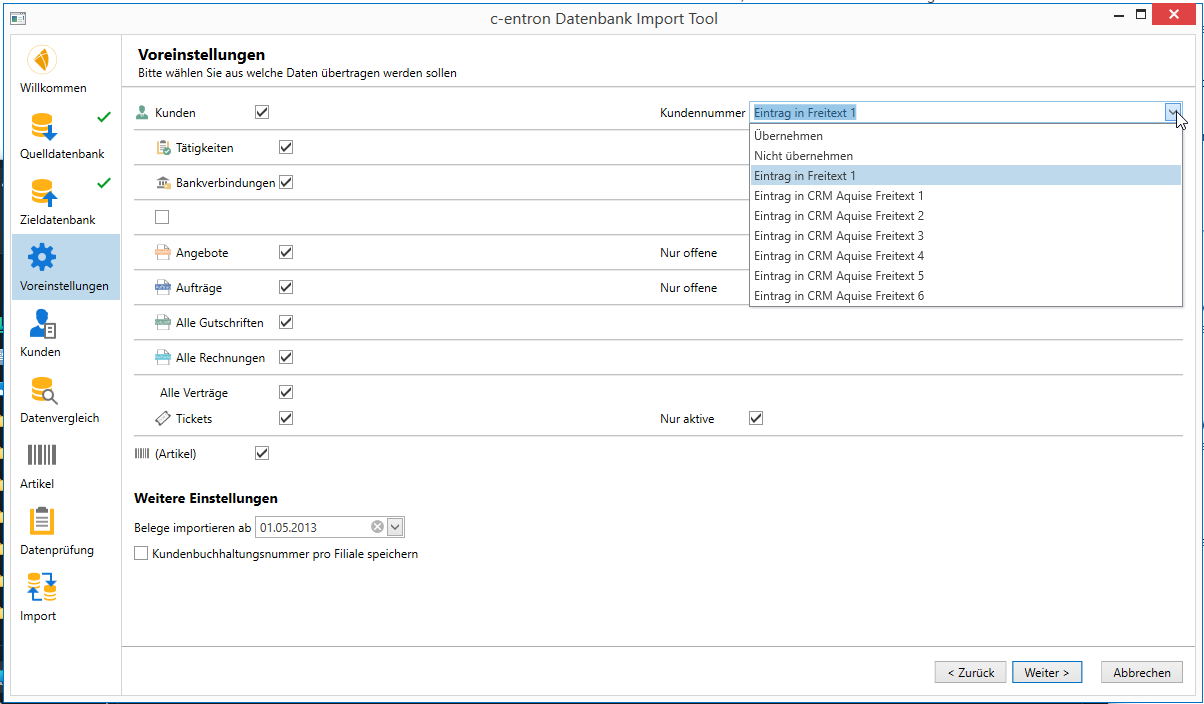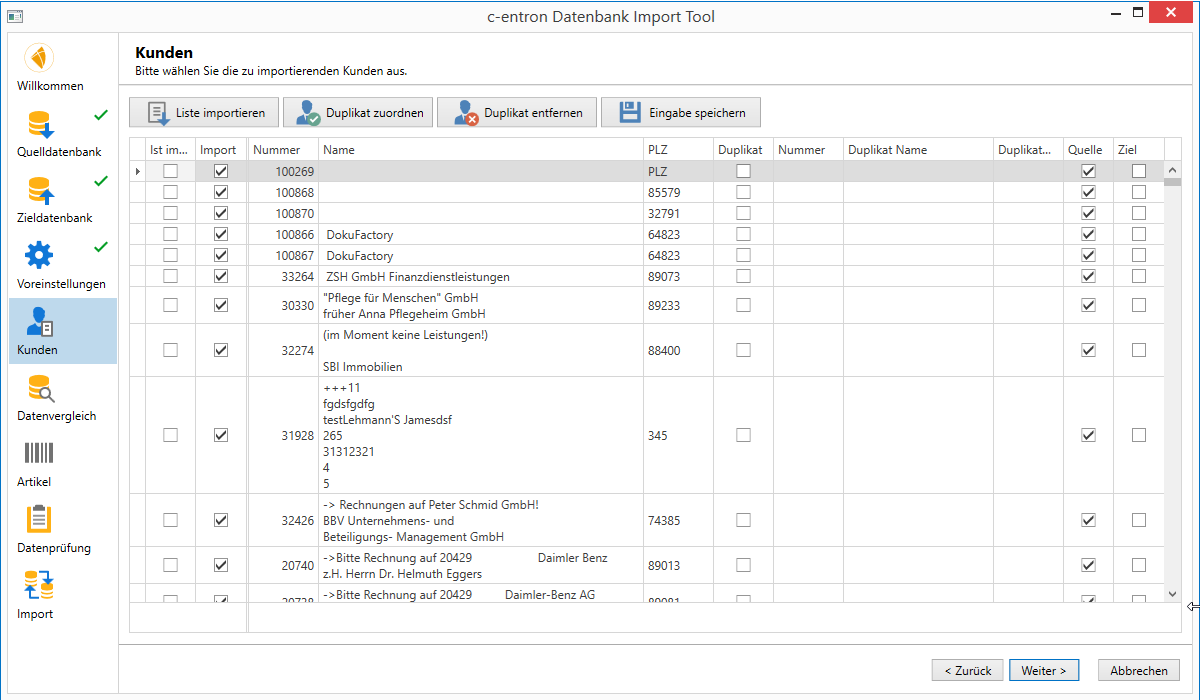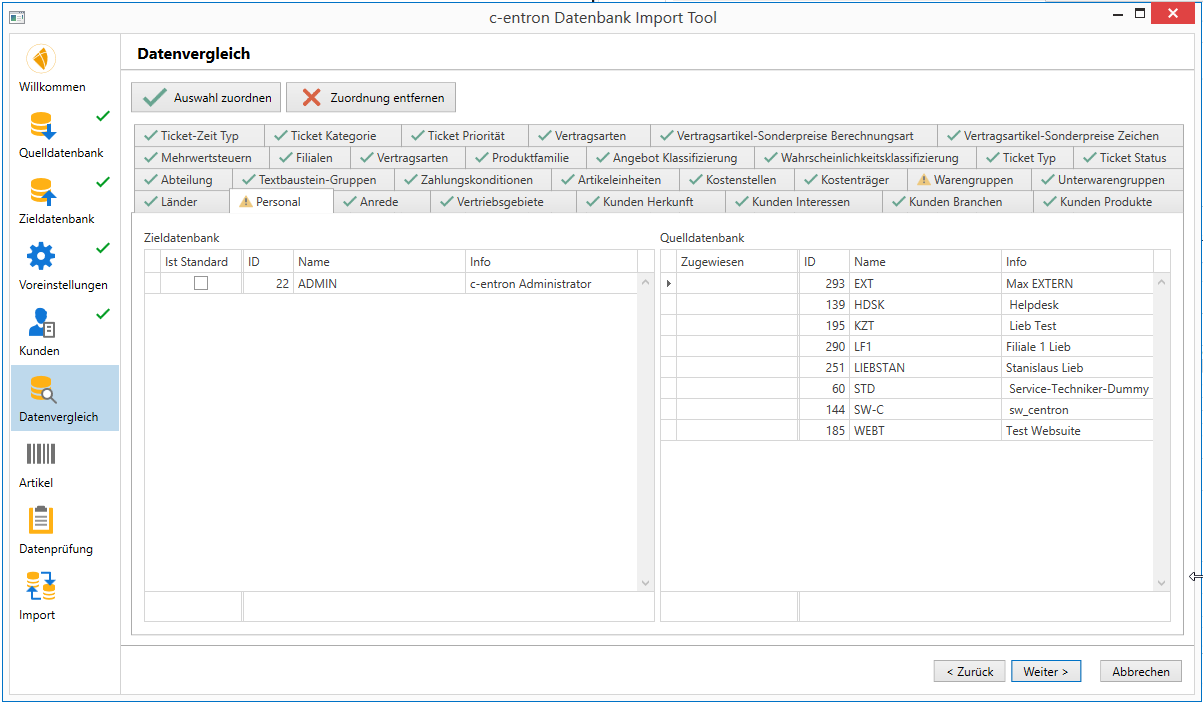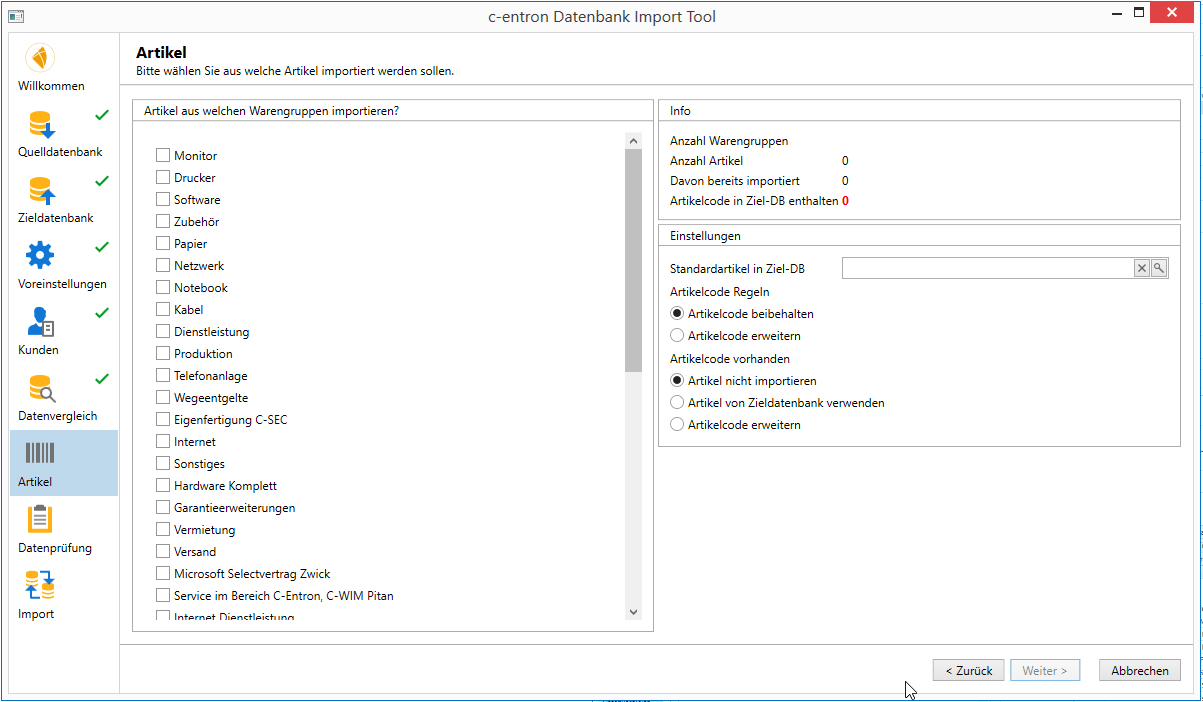c-entron Database Merge Tool
General
The tool is designed to import one c-entron database into another. For example, if Celos acquires a company that also uses c-entron, the tool could be used to import the acquired company into the Celos database.
Where is the project located?
The project is in the "c-entron Tools Solutionthe project is called "Centron Database Merge"
Data access
The tool uses Microsoft's Entity Framework for data access. At the time the tool was created, the designer was used for this purpose. The easiest way to edit it is via Visual Studio. Here, "CentronDatabaseModel.edmx" is recognized and a designer is displayed for it.
Special features / important information
Customers are informed via the old customer structure migrated. This means that if the user has already migrated their address database, there will be a problem when performing a data comparison of customers.
(Known Issue) A few entities need to be checked. Occasionally, there are type differences between the target and source databases. Here, you might want to integrate a few scripts that check this before executing the import function and, if necessary, fire a few ALTER statements to equalize the data.
User experience design
The program is structured as a wizard. 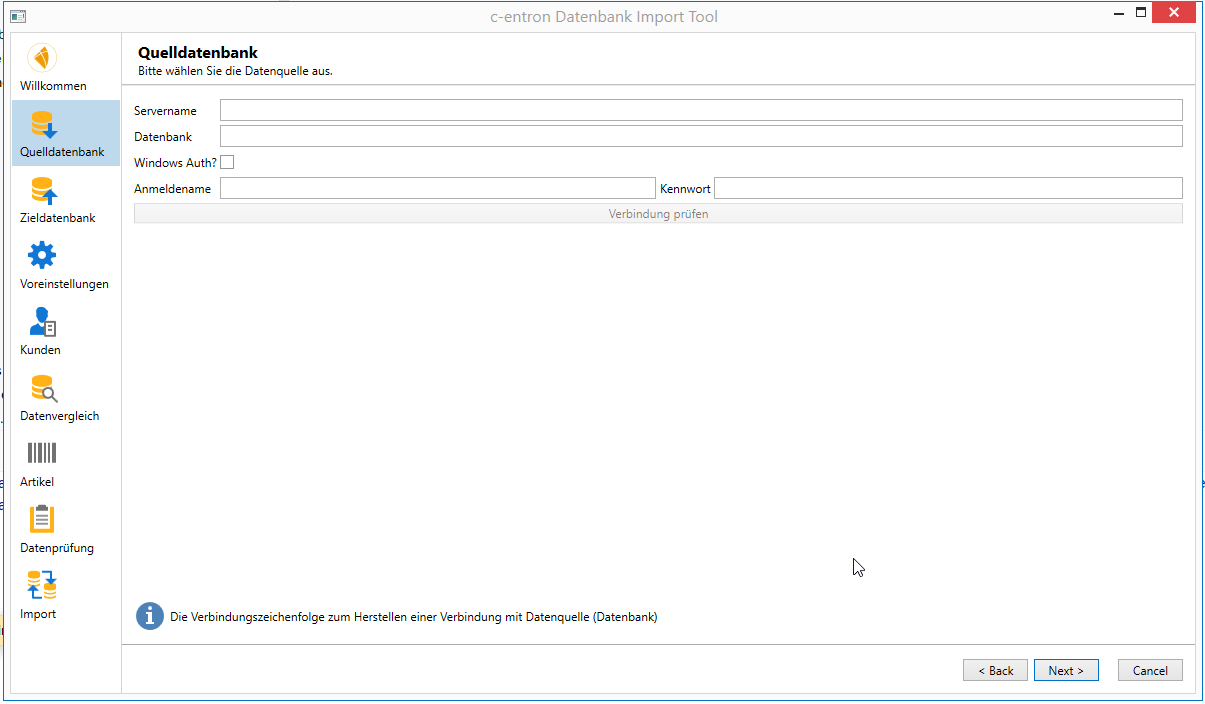
The configuration is saved in a file in the program directory.
Default settings
Here, the customer selects everything that is to be transferred. Customers, documents, contracts, items, and up to which date in descending order
Customers
Customers from the "source database" are listed here. If automatic recognition finds the same customers in the "target database," they are automatically assigned.
Here, the customer has the option to edit further assignments. Specify who is the main provider of the information (source or target).
About "Save entry" allows you to save the current configuration so that you can continue working at a later time.
About "Import listan Excel document can be imported in which the assignments of existing customers have been made using an Excel document.
Data comparison
This area is used to assign the various "master data." For example, human resources: The customer must independently create the new employees (who come from the source database) in the target database.
Employees can now be assigned in the "Personnel" tab.
IMPORTANT: For each entry (per tab), you can set an "Actual Standard." This is used as a fallback. For example, if the source database had a "Hans Müller" but he was not assigned to any employee in the target database, the "Actual Standard" employee is used for "Hans Müller."
Article
This section is used to specify which items are to be transferred. From which product groups, how should the item code transfer be handled (generate new ones or retain old ones? Add an extension to the item code?) This is specified here.
Data verification
Here, the customer must confirm that they have created a backup of the source and target databases. This ensures that if an error occurs during import, the import can be reversed!
Import
This is where the import is performed.
Screenshots
